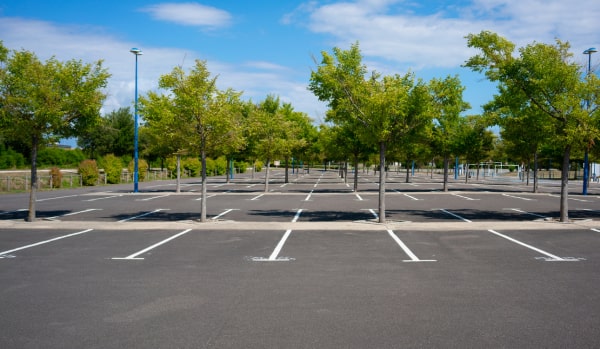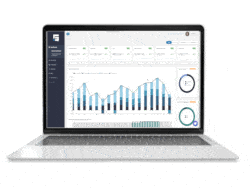When it comes to commercial real estate, there are many terms and concepts that can seem complex and confusing. For example, many people ask, “What does CAM mean in commercial real estate?” It stands for Common Area Maintenance caps. A CAM cap is a limit on how much a tenant pays for CAM in a commercial lease. CAM caps can be cumulative or non-cumulative.
Common area maintenance charges can be included in a gross lease as an additional rent expense. They can also be applied to one of the three “nets” in a triple-net lease agreement (NNN). A cap on CAM charges, presented as a percentage, limits how much owners can raise CAM charges each year.
When negotiating CAM caps within a commercial lease agreement, landlords and their tenants often negotiate CAM caps to protect themselves. This blog post will explore CAM caps and their use in the commercial real estate industry.
Understanding CAM Caps
What is CAM in rent, you ask? Tenants in a building or complex share common areas such as lobbies, hallways, elevators, parking lots, and landscaped areas in commercial property. These areas require ongoing maintenance and repairs to ensure they are clean, safe, and well-maintained. Tenants typically share the operating costs of these common areas in the form of Common Area Maintenance (CAM) fees.
CAM expenses can include cleaning services, landscaping, snow removal, security, repairs, and general maintenance of communal spaces. Each tenant is responsible for a pro rata, or proportional share of overall CAM expenses, usually based on their percentage of the total leasable area of the building.
Landlords often implement CAM caps to protect tenants from unpredictable and potentially excessive CAM expenses.
The Role of CAM Caps
Caps on CAM charges mean that renters can’t pay more than a certain amount for these costs. As soon as the total CAM costs go over the set limit, tenants don’t have to pay anything extra to keep the shared areas in good shape. Most of the time, these caps are between 3% and 10% per year.
Here’s an example of a tenant and owner agreeing that the landlord can’t charge more than 7% a year for property management. This means that the next year’s increase for property management can’t be more than 107% of the previous year’s increase.
Tenants negotiate maintenance caps in order to better plan their budgets and protect themselves from sudden increases in CAM costs. Although anyone can negotiate in a commercial cap, the following types of tenants negotiate them the most frequently:
- Anchor tenants – because they attract foot traffic to the property.
- National or credit tenants – the common examples of this are Starbucks and Verizon.
- Office tenants in large spaces – negotiating a large space gives the tenant some leverage.
- Franchise tenants – are similar to national or credit tenants. There is often a corporate parent that requires the same terms across locations.
CAM Caps on Triple Net Leases
Caps can play a role in all types of leases, but they are especially relevant in triple net (NNN) leases. With an NNN lease, the base rent, plus taxes, insurance, and CAM charges, is covered by tenants. That leaves little basis for base rent increases to be able to dramatically affect their total occupancy cost.
The following is what makes CAM caps so relevant in NNN leases:
Exclusions are standard: Landlords will exclude insurance premiums and property taxes from the cap because they have no control over them. Caps usually only cover controllable CAM items, such as landscaping, janitorial, or maintenance.
Tenant predictability matters: For firms doing an apples-to-apples comparison of one space to another, a CAM cap in an NNN lease can be the game-changer. It’s a message that says, “They’re stable. They won’t get out of control.”.
Landlords balance risk: Owners may include caps to lock up or retain tenants, but insulate themselves by modestly increasing base rent or limiting the frequency of capped expenses.
In short, CAM caps in NNN leases are not merely an issue of cost containment but actually affect negotiations and can make or break a tenant’s willingness to lease.
Cumulative Versus Non-Cumulative
The other thing to consider is whether the cap is cumulative or non-cumulative. A cumulative cap provides flexibility for the landlord. If a cap is set at 6% annually and the increase for a given year is only 4%, that leaves 2% unused. You can use this unused cap in future years. In this scenario, in year 3 of the lease term, the increase can increase to 8% as the unused 2% can be included as well.
Non-cumulative caps are set each year. Whether the increases reach the cap or not, the cap is what it is. The tenant will not pay more than the agreed-upon increase. For instance, if the landlord sets the non-cumulative cap for landscaping at 5% and the expenses do not reach that amount, the landlord cannot recover the unused percentage. Non-cumulative caps are more tenant-friendly.
Negotiation Considerations
When entering into a commercial lease agreement, tenants and landlords must understand all aspects of negotiating lease CAM caps. It is advisable to consult with a commercial real estate attorney or broker who can guide landlords through the leasing process. They can help negotiate favorable CAM cap terms.
Landlords should consider factors such as the initial CAM amount and the percentage to increase the CAM amount. They should also consider the frequency of cap adjustments, mechanisms for reviewing and calculating CAM expenses, how to resolve any disputes regarding CAM expenses, and any exclusions to the cap.
It doesn’t matter what kind of cap landlord and tenant agree on; all of them put the risk of unexpected increases in running costs on the landlord instead of the tenant. If common area costs go up from one year to the next at a faster rate than the fixed percentage rise agreed upon in a tenant’s CAM cap, the tenant will not have to pay the extra amount.
Instead, either the landlord will pay for those costs or they will pass them on to other tenants in the same building. These tenants may have different types of leases or lease terms that let the landlord pass on the costs that other tenants haven’t covered (i.e., leases that require the tenant to help pay for other tenants).
Impact on Valuation and Underwriting
CAM caps don’t just impact leases; they also impact the perception of investors and lenders regarding a building. By restricting expense recovery, caps can reduce net operating income (NOI), which in turn reduces property value. Restrictive caps can also make a building appear riskier at underwriting, while loose language more frequently supports stronger valuations. Owners, it’s a trade-off: CAM caps can attract tenants but can affect long-term value and capital.
Manage CAM Caps with STRATAFOLIO
In business real estate, CAM caps are a very important negotiation tool. For landlords to make smart choices, they need to understand and negotiate the terms of CAM caps. Then, they need to manage those terms accordingly.
When landlords know about CAM caps and what they mean, they can confidently deal with the complicated world of business real estate leasing. Contact us to learn how STRATAFOLIO can help you manage shared area maintenance expenses and complete CAM reconciliation in 1-click. Schedule a demo today!




